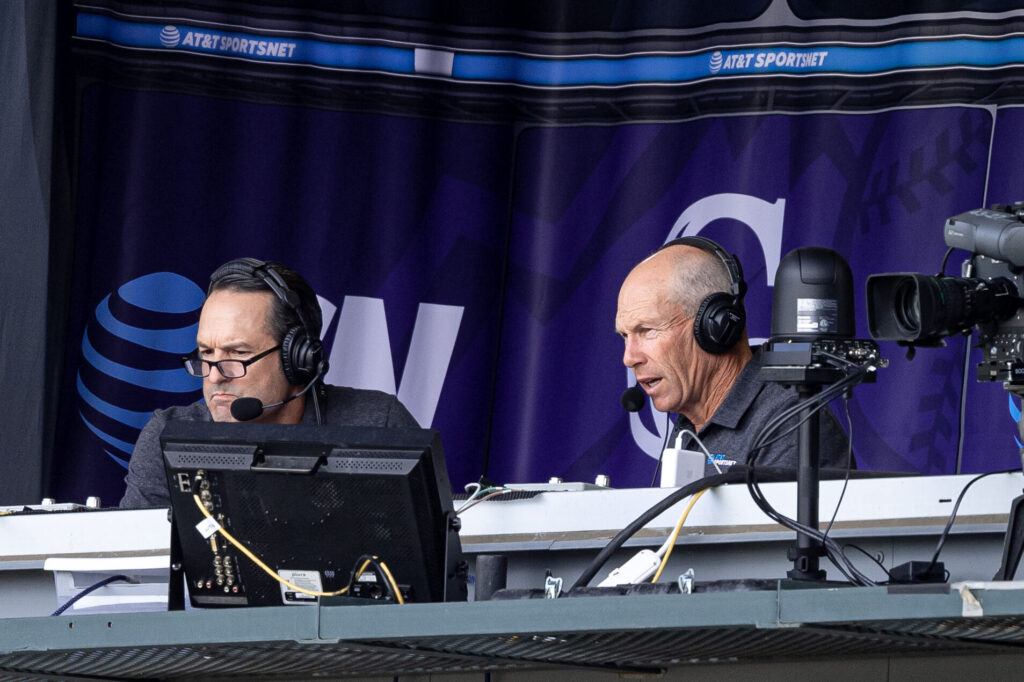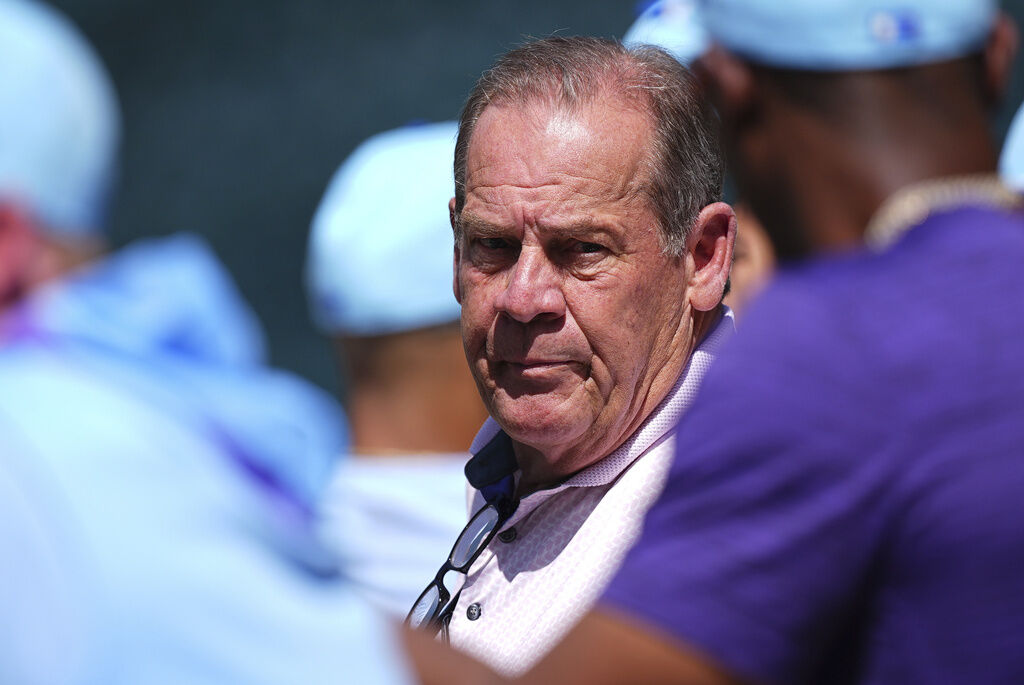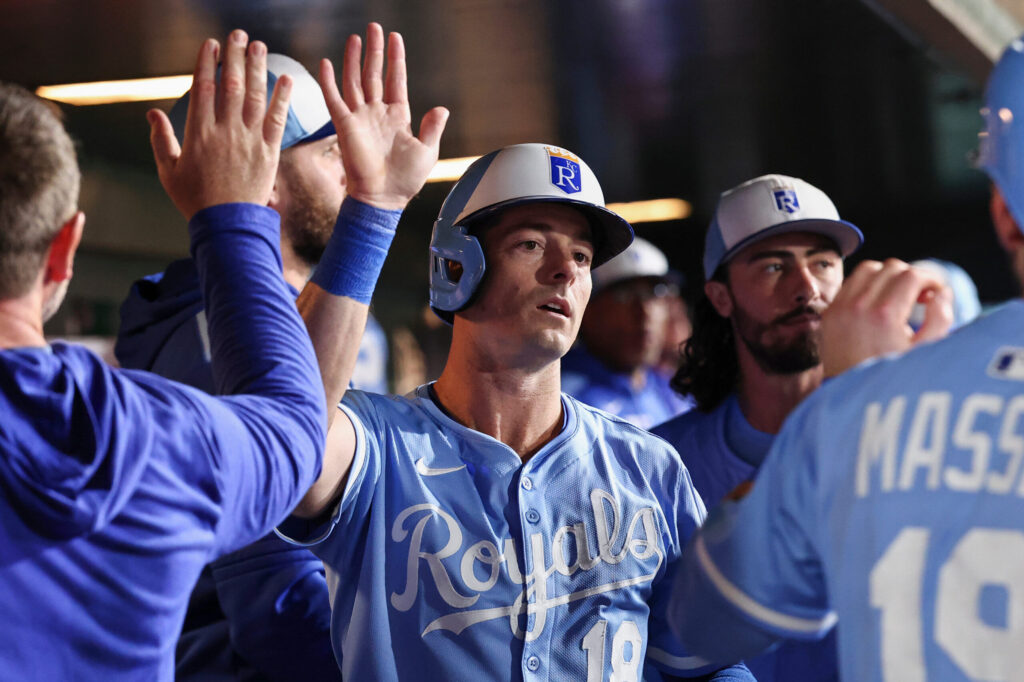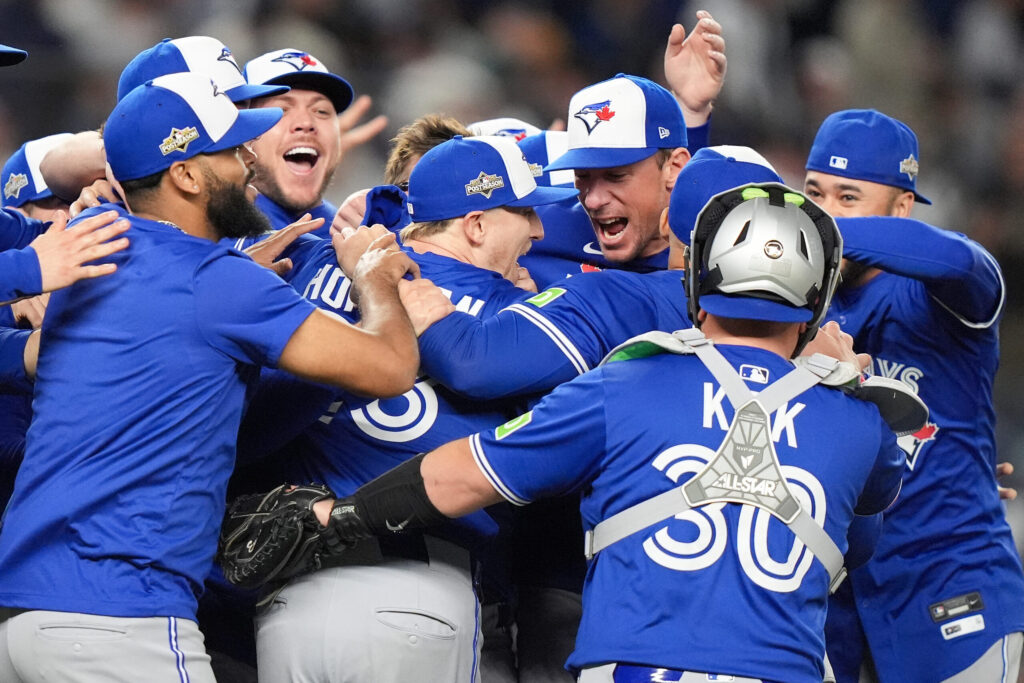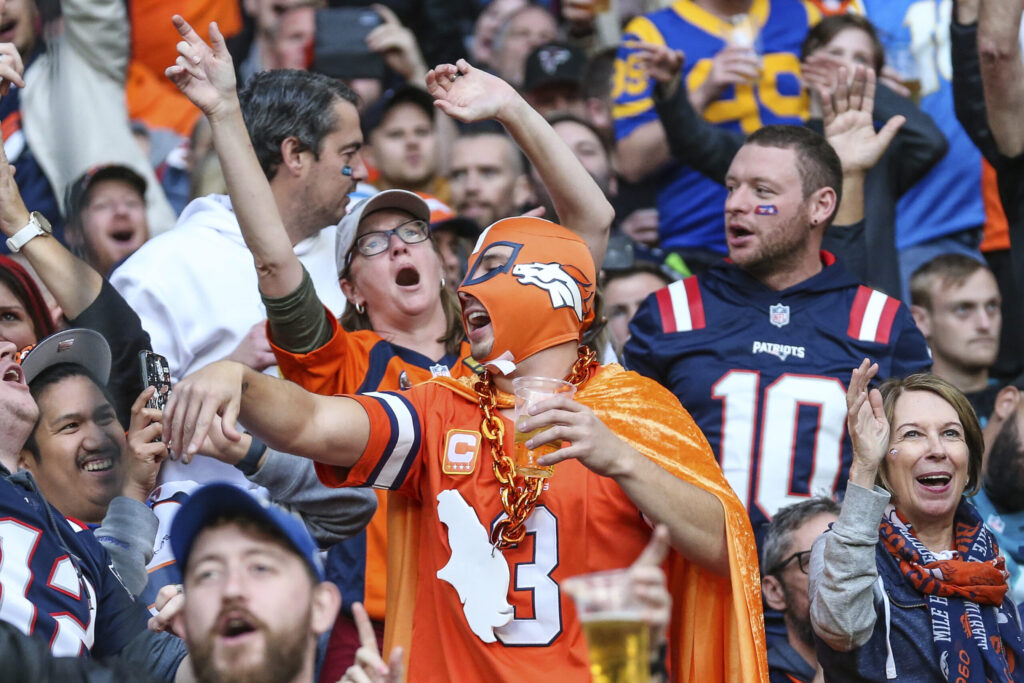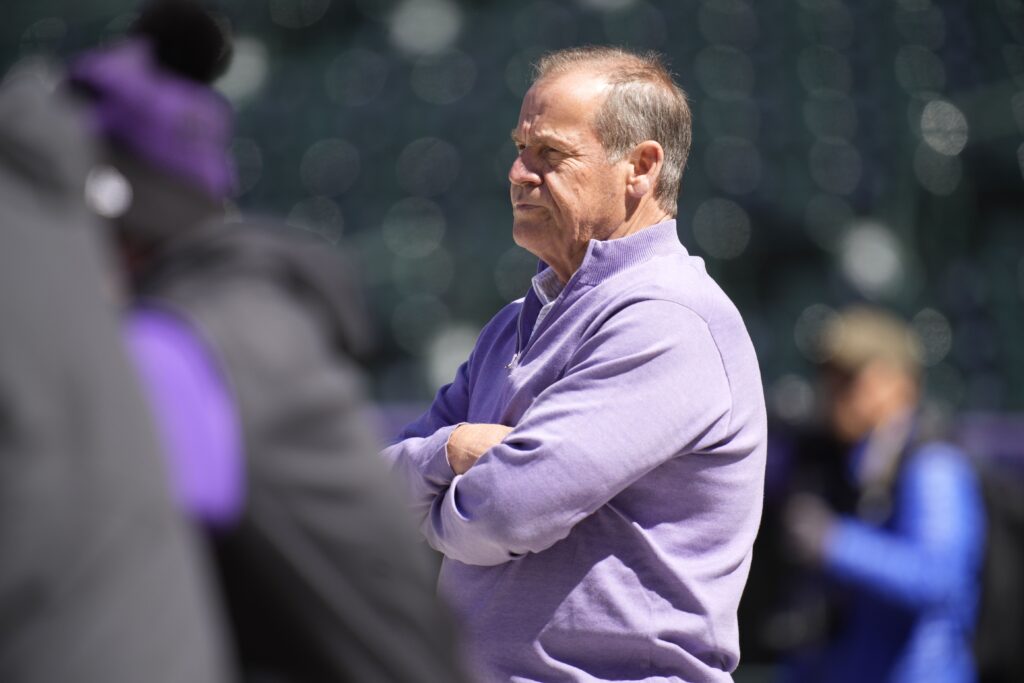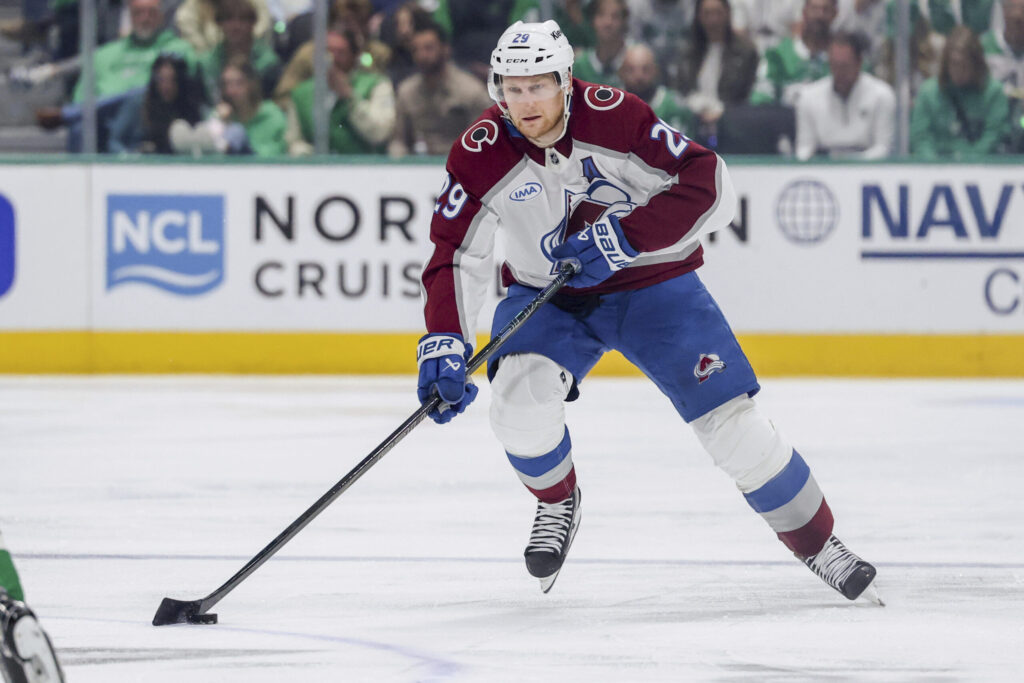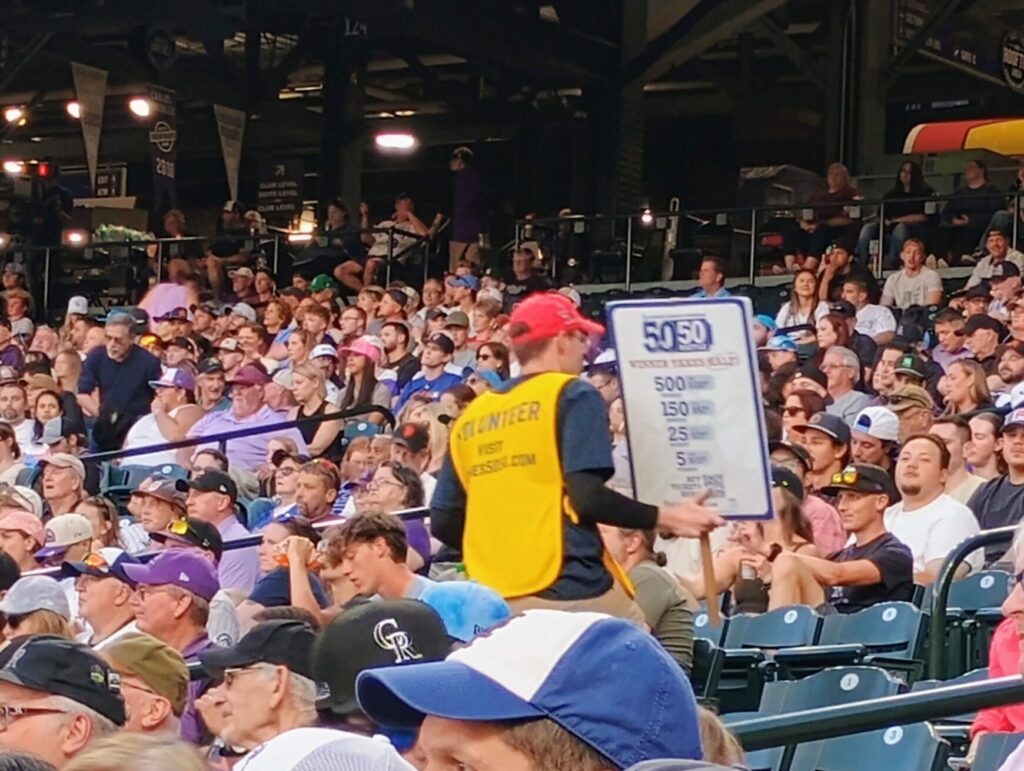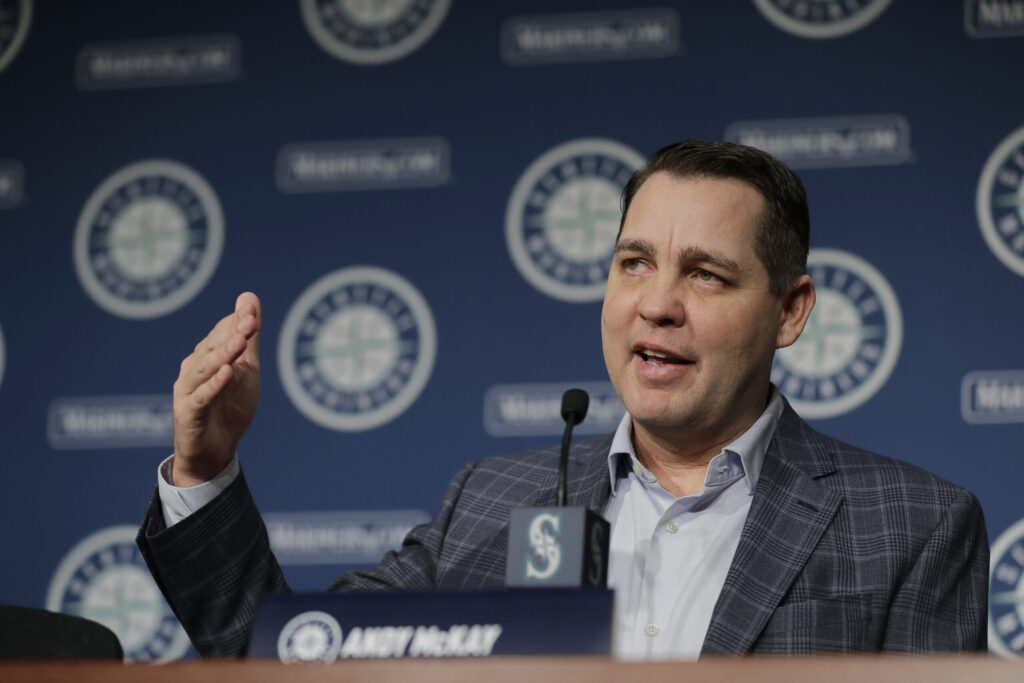Rockies must scale financial mountains to become relevant in NL West | Kevin’s take
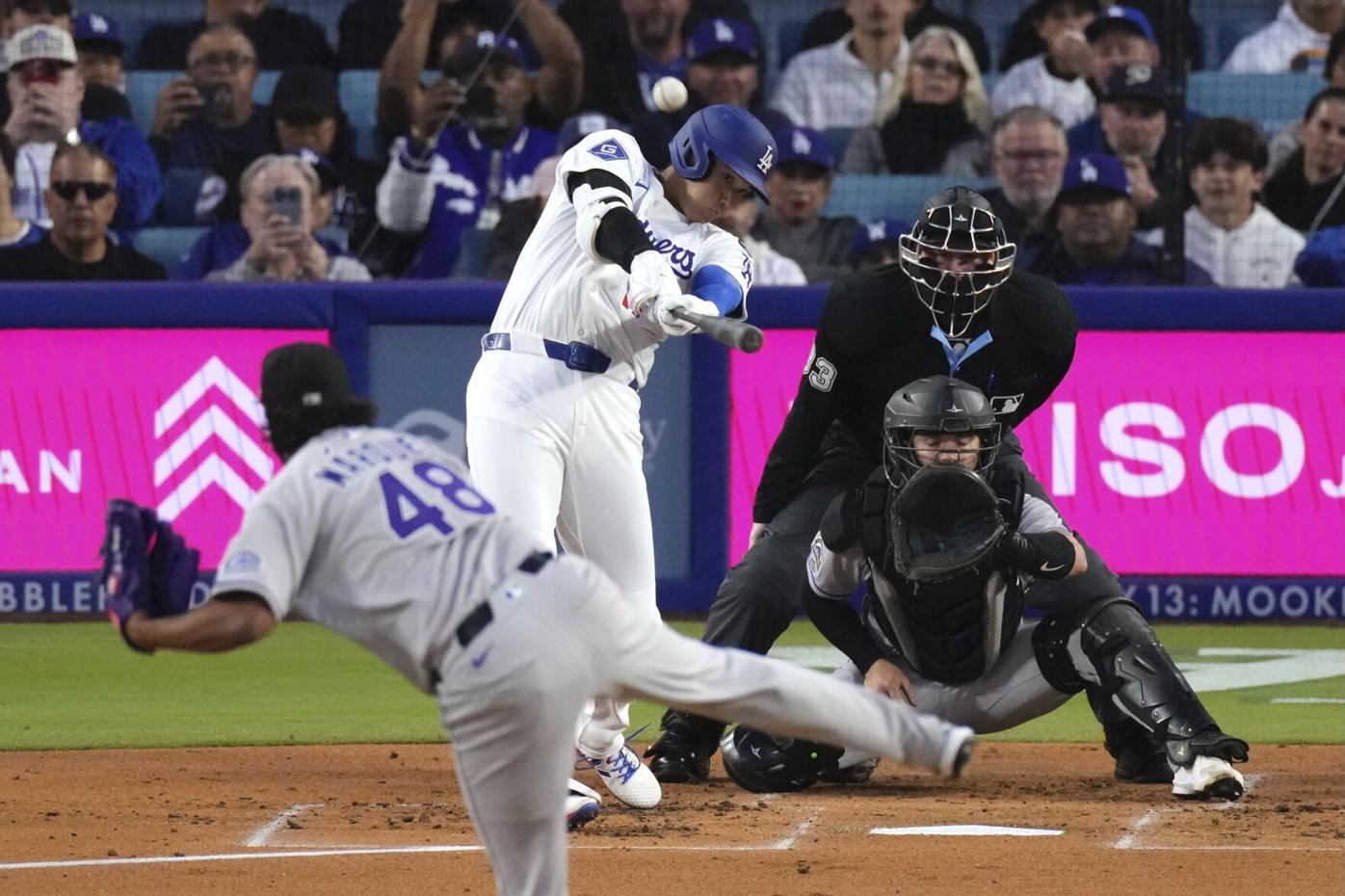
Los Angeles Dodgers' Shohei Ohtani hits a solo home run as Colorado Rockies starting pitcher German Marquez, left, watches along with catcher Braxton Fulford during the first inning of a baseball game against the Colorado Rockies Wednesday, April 16, 2025, in Los Angeles. (AP Photo/Mark J. Terrill)
Mark J. Terrill
The numbers are staggering and absolutely alarming.
Entering the start of the National League West-focused homestand with the Arizona Diamondbacks and Los Angeles Dodgers on Thursday, Colorado Rockies catcher Hunter Goodman had smacked a team-leading 24 home runs this season while earning $765,000.
Meanwhile, the Los Angeles Dodgers were paying three-time All-Star Will Smith just over $12.9 million to catch as part of a 10-year, $140 million deal. The Dodgers’ active payroll of just over $245 million, makes Colorado’s thrifty and young approach (just over $40.5 million active) look almost quaint by comparison.
This is real life in the NL West, where the Rockies face not one, but multiple Goliaths with seemingly bottomless wallets.
The financial chasm
The spending gap across the NL West has gotten out of hand. Only the Mets ($339.7 million active payroll) spend more than Los Angeles, while even Arizona — hardly a big-market powerhouse — stunned many in the baseball world by handing Corbin Burnes a six-year, $210 million contract this winter. San Francisco joined the party with Willie Adames’ seven-year, $182 million deal, leaving Colorado looking like the kid pressed against the candy store window as it thought about how the value of the Adames contract will likely soar past the identical deal they handed to Kris Bryant before the 2022 campaign.
Position-by-position comparisons make it worse. Four NL West teams will pay a combined $5.1 million for their starting catchers. The Dodgers spend nearly three times that on Smith alone. At first base, the Rockies are paying rookie Warming Bernabel near the league minimum while Los Angeles shells out $22.7 million for reigning World Series MVP Freddie Freeman.
This isn’t a competitive imbalance … it’s financial warfare.
Gaming the system
What’s really maddening for teams such as Colorado is watching the Dodgers basically hack baseball’s salary structure. Shohei Ohtani’s $700 million contract defers $680 million until after he retires, a financial sleight of hand that smaller markets with smaller television contracts can’t pull off. Over the past five years, Los Angeles has used deferred money in nine different star signings, letting the Dodgers dodge luxury tax penalties while stockpiling talent.
It is a brilliant loophole that creates two sets of rules. The Rockies count every dollar; the Dodgers sign superstars knowing they can push most of the bill into the 2030s and beyond. Try explaining that competitive balance to fans in Denver.
Finding light in the darkness
But Colorado isn’t completely hopeless.
Ezequiel Tovar might be the division’s best defensive shortstop. The Gold Glove winner led the majors with 45 doubles last season and costs just $4.2 million this year — pocket change compared to the $26.2 million the Dodgers pay Mookie Betts. Two-time Gold Glove center fielder Brenton Doyle makes near the league minimum but potentially has more upside than anyone else patrolling center field in the NL West.
The youth movement in Colorado is reminiscent of teams that have figured out how to compete on a budget. Tampa Bay consistently punches above its payroll weight through smart development and roster creativity. Baltimore went from the basement to playoff team by betting on young talent and making calculated additions.
There’s a blueprint here, even if Colorado hasn’t followed it consistently.
The path forward
The Rockies need to get smarter about finding value where big spenders waste money. While Los Angeles pays premium dollars for established stars in the bullpen, the Rockies are rolling out with young relievers making near the league minimum. That’s the kind of market inefficiency Colorado should exploit relentlessly.
Timing matters as well. Even the Dodgers can’t stay this good forever. When windows crack open, the Rockies need systems in place to capitalize.
Most importantly, they must embrace what makes Coors Field different. After three decades at 20th and Blake, it’s time to stop fighting the altitude and start building around it. Find hitters who can rake in thin air and pitchers who won’t get destroyed by it. Make the ballpark an advantage instead of an excuse.
The bigger picture
The NL West showcases everything wrong with baseball’s economic structure. When one team can defer $680 million in contracts while fielding a $308 million roster, “competitive balance” becomes a punchline. Revenue sharing and luxury taxes were supposed to level things out, but creative accounting has made them largely irrelevant.
When the Dodgers come to town, Rockies fans will watch young players still learning on the job while their division rivals field a lineup containing future Hall of Famers. It’s understandably frustrating. But baseball still produces surprises, and underdogs still occasionally win. Colorado just needs to get a lot better at being an underdog.
The mountain the Rockies face isn’t just about elevation. It’s financial, structural, and steep as any climb up a 14er. But sometimes the longest odds make for the best stories.
Colorado fans are still waiting for theirs to begin.






